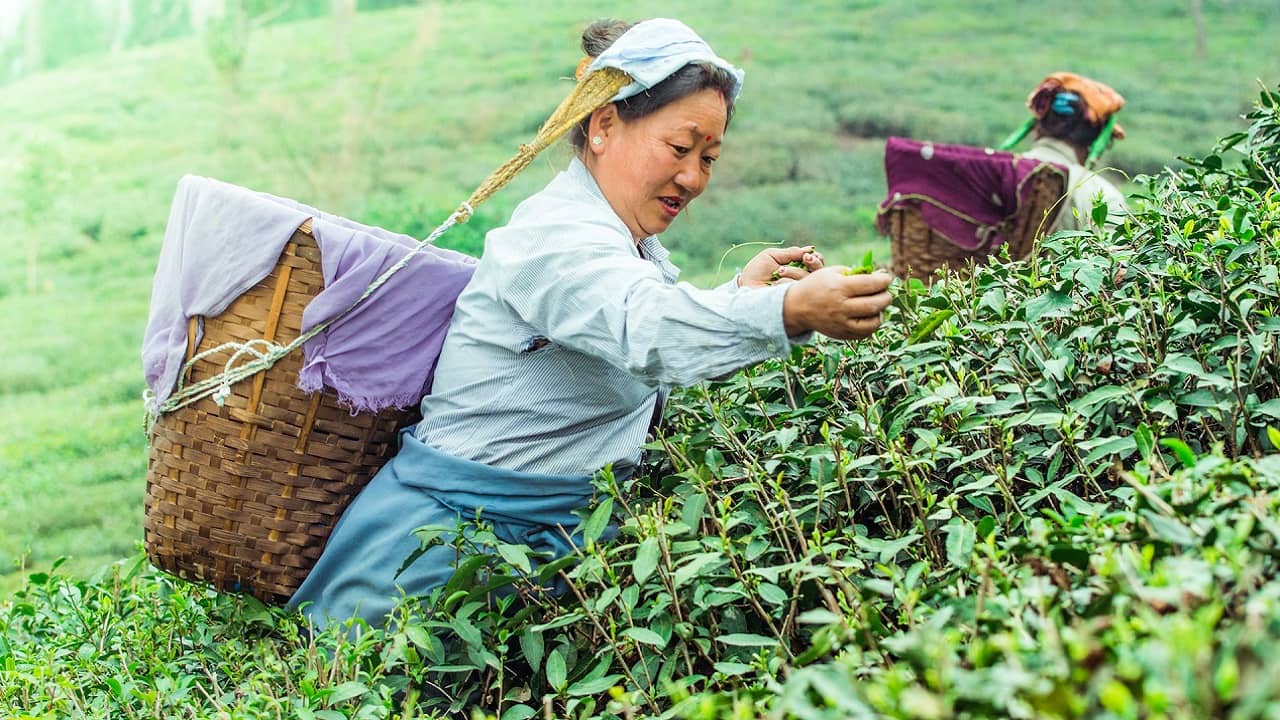Nifty Closing Today: March 28 Market Highlights
Is India’s tea industry losing its flavour as output, exports stagnate and costs rise?

Earlier this week, a little-known company picked up a small stake in India’s largest bulk tea producer McLeod Russel. Carbon Resources Pvt Ltd, which makes input materials for ferro alloys, aluminium and steel industries, acquired 52.5 lakh shares, or a 5.03% stake, in the troubled tea maker for approximately Rs 15 crore.
This led to speculation that the loss-making tea company could be facing a takeover threat from Carbon Resources. The news came as a shot in the arm for the stock, which touched a one-year high of Rs 41.10 on September 21 after rallying more than 50% over the previous five days and compared with a one-year low of Rs 18.00 in June.
But in a way, that also speaks of how battered and beaten down the tea industry counters have been over the recent past.
McLeod Russel is controlled by the family of the late BM Khaitan. The Khaitan family recently lost control of battery maker Eveready to the Burman family of Dabur, and is now staring at a similar possibility as its stake in McLeod Russel has fallen to just over 6.25%.
But McLeod Russel is not the only company in the sector that has seen better days in the past.
A look at the share price data shows that nearly all the other listed tea companies in India have seen their market capitalization go south over the last year.
Andrew Yule & Co Ltd, for instance, has lost more than 7.5% over the last one year. Dhunseri Tea & Industries has left its shareholders poorer by more than 24%. Harrisons Malayalam Limited, which also has rubber plantations, is down 15.7%, and Bombay Burmah Trading Corp has lost more than 17%.
Apart from McLeod Russel, the only other tea company that seems to have gained over the last year is Gillanders Arbuthnot & Co, a tiny company with a market value of Rs 150 crore and which returned 58% to its shareholders.
Production, exports
India is the world’s second-largest consumer and producer of tea, after China. In India, tea is cultivated in almost 15 states. Assam, West Bengal, Tamil Nadu, and Kerala are the major tea-growing states, accounting for nearly 98% of the total production. India is also known for producing some of the finest teas in the world, like the Darjeeling, Assam, Sikkim, Nilgiris and the Kangra tea varieties.
But the Indian tea industry appears to be a complete disarray, with falling prices, rising costs, stagnant production, and declining exports. Tea output, for instance, fell in 2020-21—the first year of the Covid-19 pandemic—before recovering a little in 2021-22.
India’s tea exports declined to around 196 million kg in 2021 from 252 million kg in 2019. Similarly, export revenue has also fallen in recent years.
Moreover, the decline in India’s shipments has come at a time when other key exports such as Kenya, Sri Lanka and Vietnam have been ramping up their presence in international markets. In fact, these three countries export more than 80-95% of their production while India consumes 85% of its tea production itself.
Litany of woes
According to a December 2021 report by industry lobby group ASSOCHAM and ratings firm ICRA, the cost of production of tea has been higher than price realisation at the auctions.
The report said that while FY2021 proved to be one of the best years of the Indian tea industry in recent times for the bulk tea industry, sustainability remains a crucial issue.
It said that while labour costs increased, production volumes have risen but per capita domestic consumption remains almost stagnant.
Increased production by the small tea growers has also led to the pressure on prices and there had been a decline in operating margins of the companies, according to the report.
But the litany of woes for the India tea industry does not just end here. According to news website The Probe, in June, the chairman of the Indian Tea Exporters Association (ITEA), Anshuman Kanoria, was quoted in media reports as saying that several countries had rejected Indian tea consignments because of the high presence of pesticides.
Small tea growers and industry stakeholders fear the news of the tea consignments being rejected in the international market may further hit the Indian tea sector.
No wonder, then, that nearly half the tea estates of Darjeeling in West Bengal are reportedly looking for buyers.
Kanoria reportedly said that both the international and domestic buyers had rejected a series of tea consignments from India because of the presence of chemicals and pesticides beyond permissible limits. However, the news website later reported that he withdrew his statement and said that he had been misquoted.
According to the same report, B Kumaran, former Vice Chairman of the Tea Board of India, said that the Indian tea industry is not just ailing or facing losses but is bleeding.
“For the past 20 years, we have not seen any upward trend in the industry. Since 1999, the price of tea has been steadily decreasing. Today, the tea sector is at its lowest ebb,” he said. “The tea industry is a buyer’s market, and the buyers decide our market. I am at a loss to understand why this has been happening for the last 20 years.”
Kumaran also said that many tea growers have sold their properties and left their states looking for other job opportunities because they have understood that the tea industry cannot help them meet their ends. “2022 is the worst period for the Indian tea industry,” he said.
And then there’s the case of the Geographical Indication, or GI, tag in the tea industry, more specifically for Darjeeling tea, which accounts for a minor share of India’s overall production, but has been a foreign exchange earner for the country as tea from the region’s estates is exported to markets across Europe and the US.
Falling fortunes
Liquidity challenges, amid high wages along with falling demand and prices are the main reasons for the troubles in the industry, according to a recent report in The Economic Times.
According to the report, there are mainly four reasons for the decline in the fortunes of India’s, and in particular Darjeeling’s, tea industry.
First, Europe, a top export destination for Darjeeling tea, has been facing recessionary pressure. A fall in demand from European consumers has worsened the situation for tea producers, the report says.
Also, Japan, one of the biggest customers of Darjeeling tea, drastically cut tea purchases from India after a 100-day shutdown in 2017 due to the Gorkhaland agitation. During this shutdown, Japan turned to Nepal for tea.
Missing international buyers from Europe and Japan have affected the prices of tea. The rise of Nepal’s tea in both, import and export markets, has hugely impacted the production of Darjeeling tea and sale over the years, according to the report.
Second, the Nepalese tea flooding the Indian market is of inferior quality. Moreover, it is being re-exported as premium Darjeeling tea from the Indian market.
Between January and May 2022, import of tea from Nepal stood at 4.59 million kg, compared with 1.98 million kg in the same period in 2021.
This is further diluting the global brand image of India and affecting domestic tea prices, the same report says.
This, in turn, has led to falling production. In its prime, Darjeeling tea production touched 11 million kg in a year. In 2021-22, its production was at 7.15 million kg.
The Probe says several big companies have exited the tea industry in the last few years. The increasing cost of production and decreased earnings have made the tea business unviable for many small businessmen and growers.
So, how can this mess in the Indian tea industry be fixed?
Tea industry veterans say the Indian commerce ministry and the Tea Board will have to regulate the flow of sub-standard Nepalese tea, which has been found to be pesticide-laden. They say that several Indian companies buy this Nepalese tea and sell it in the country.
Moreover, they say that while Indian tea is of superior quality, it too needs to adhere to standard practices in production, storage, and packaging.
Experts say that all tea sold in India must adhere to the standards prescribed by the Food Safety and Standards Authority of India (FSSAI). According to a recent report by the Federation of All India Tea Traders Association (FAITTA), certain tea samples in India had failed the FSSAI testing parameters.
Industry experts say the Tea Board of India also needs a revamp. It needs to be digitised and increase the workforce. The board must also hold discussions with the small tea growers more frequently and understand their problems, The Probe cites Achyut Prasad Gogoi, Secretary of Confederation of Indian Small Tea-growers’ Association as saying.
Other issues that need fixing, say experts, are migration of the workforce, absenteeism, the rising production cost of tea and the reducing costs for the product, all of which have been plaguing the industry. But solving these myriad problems won’t be as easy as making a cup of tea.
- Flat ₹20 Brokerage
- Next-gen Trading
- Advance Charting
- Actionable Ideas
Trending on 5paisa
Indian Stock Market Related Articles
Disclaimer: Investment in securities market are subject to market risks, read all the related documents carefully before investing. For detailed disclaimer please Click here.

 5paisa Research Team
5paisa Research Team
 Sachin Gupta
Sachin Gupta




